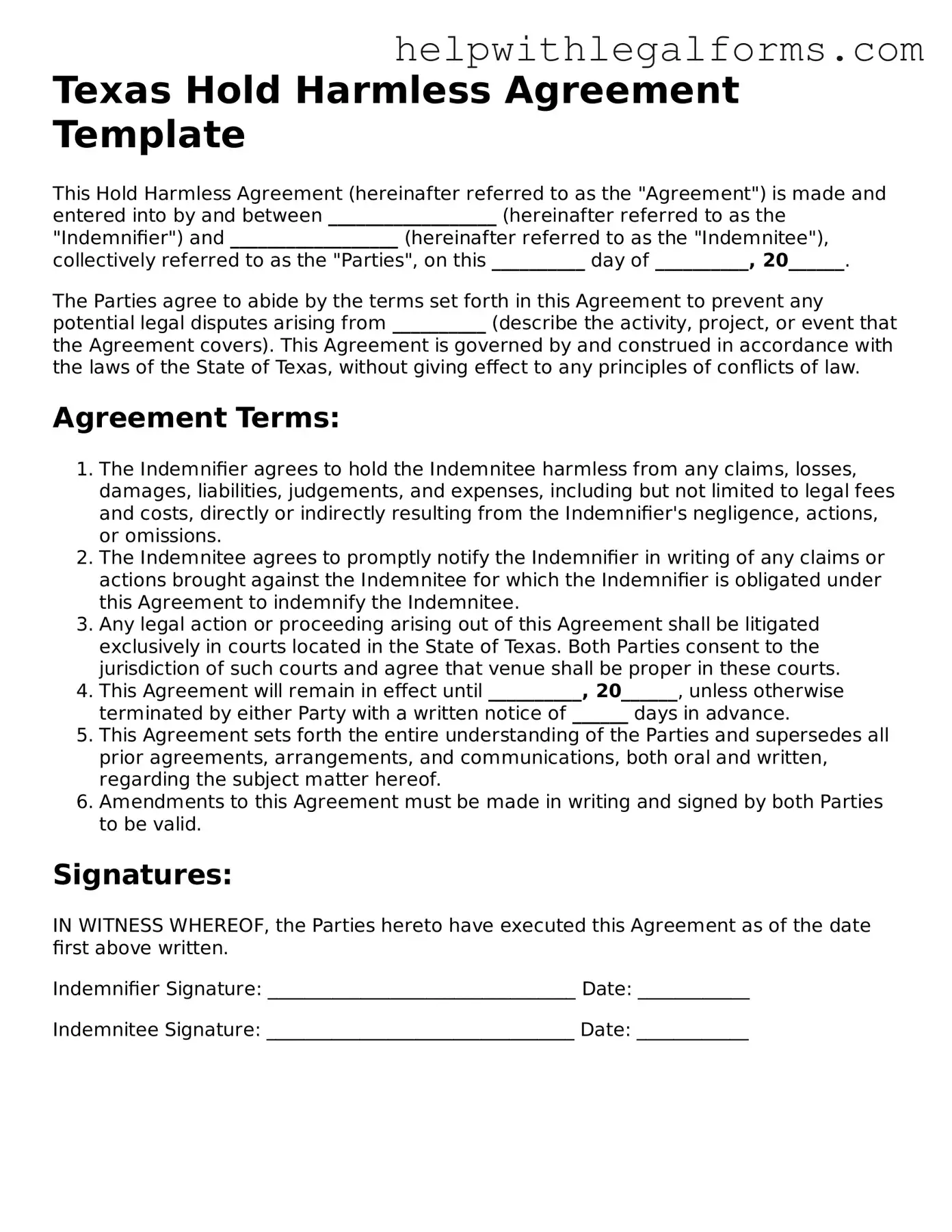What is a Texas Hold Harmless Agreement?
In Texas, a Hold Harmless Agreement is a legally binding document where one party agrees not to hold the other party liable for any injuries, damages, or losses that may occur during a specific activity or in a certain location. This contract aims to protect either or both parties from legal claims or liabilities arising from the particular situation or event described in the agreement.
Who should use a Texas Hold Harmless Agreement?
Individuals or entities engaging in activities that pose potential risks should consider using a Hold Harmless Agreement. This includes, but is not limited to, property owners, event organizers, contractors, and businesses that offer potentially hazardous activities. Essentially, anyone who seeks to limit their liability in the course of providing services, leasing property, or conducting activities that could lead to harm should use this agreement.
Are Texas Hold Harmless Agreements enforceable?
Yes, in Texas, Hold Harmless Agreements are generally enforceable. However, enforceability is contingent upon the agreement's compliance with specific legal standards and public policy. The agreement must be clear, explicit, and mutual. Courts will scrutinize these agreements for fairness and equality between the parties, ensuring that there was no gross negligence, deliberate misconduct, or any illegal activity involved. Furthermore, the agreement cannot contravene public policy.
Can a Texas Hold Harmless Agreement be customized?
Absolute! A Texas Hold Harmless Agreement can and should be tailored to fit the specific needs and circumstances of the parties involved. This customization includes detailing the scope of activities covered, identifying the precise risks, and defining the limitations of the agreement. It’s highly recommended to seek legal advice to ensure that the agreement adequately protects your interests while remaining fair and enforceable under Texas law.
What happens if a party breaches a Texas Hold Harmless Agreement?
If a party breaches a Texas Hold Harmless Agreement, the non-breaching party may have several legal remedies available. These can include suing for breach of contract, seeking damages for any losses incurred due to the breach, and requiring the breaching party to fulfill their obligations outlined in the agreement. The specific consequences and remedies will depend on the terms of the agreement and the nature of the breach.
